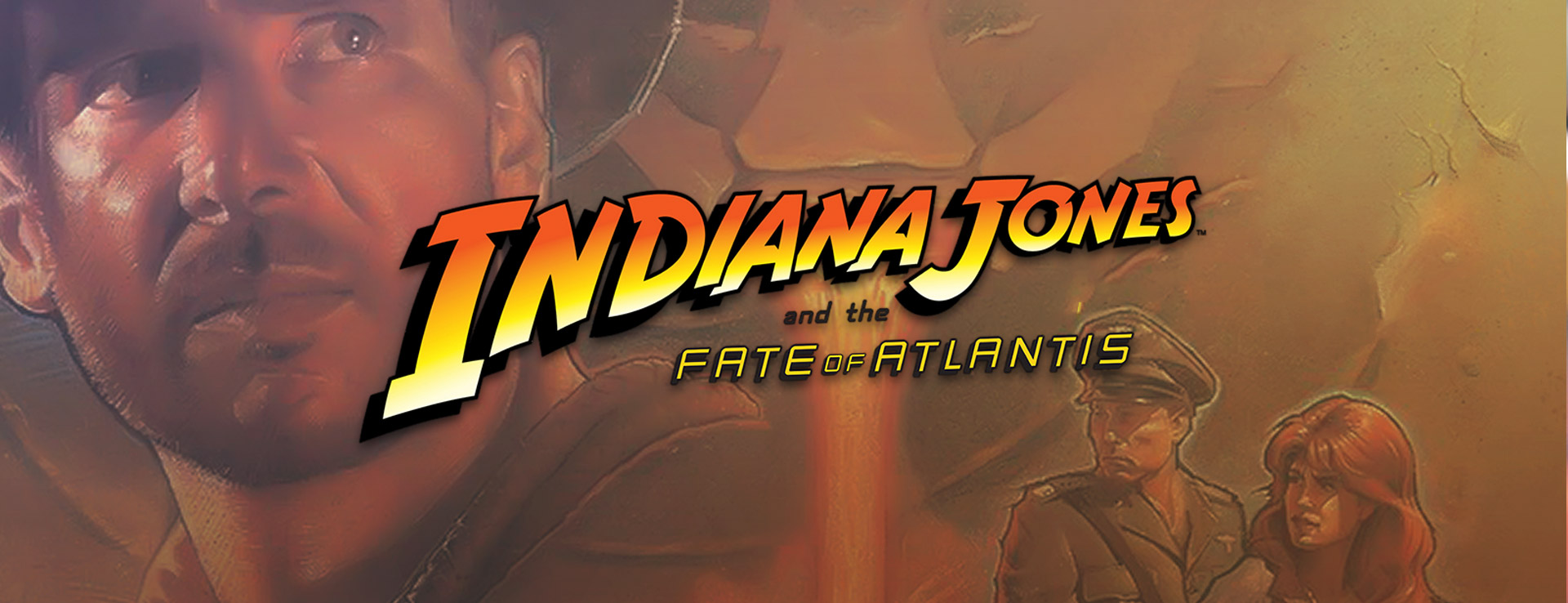Lucasfilm Games Rewind: Indiana Jones and the Fate of Atlantis
The 1992 point-and-click game added innovation to the adventure.
In Lucasfilm Games Rewind, Lucasfilm.com looks back at classic Lucasfilm Games adventures and discusses why it’s not too late to revisit them today.
Can’t stop thinking about our first look at the highly-anticipated Indiana Jones and the Great Circle? While you wait impatiently to crack Dr. Jones’ legendary whip in the first-person adventure, let’s pass the time with a look at the beloved Indiana Jones and the Fate of Atlantis.
This world-spanning adventure to Atlantis has all the hallmarks of an iconic Indiana Jones story, complete with John Williams’ instantly recognizable theme, inspiration from history, a mysterious ancient civilization with a penchant for puzzles, and, to Indy’s dismay, snakes. Add gameplay innovations like different story paths and new video rotoscoping technology, and Fate of Atlantis is a video game that’s as timeless as the real-world legend it’s based on.
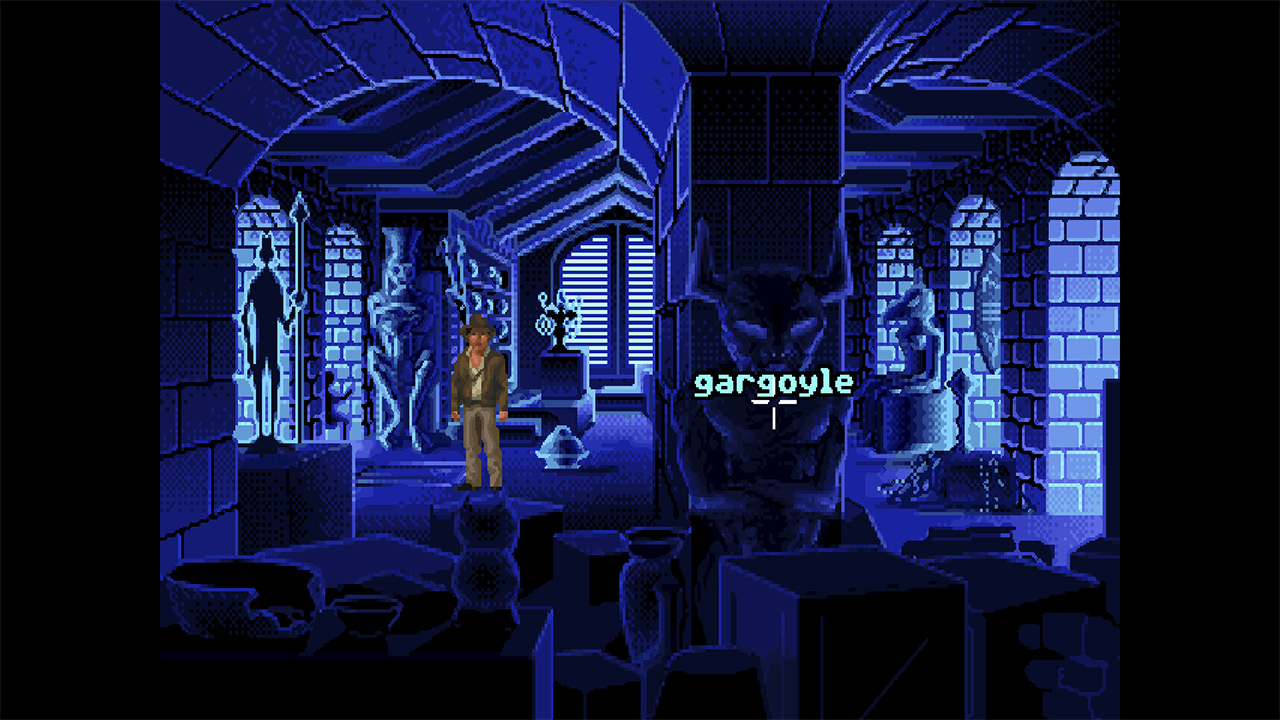
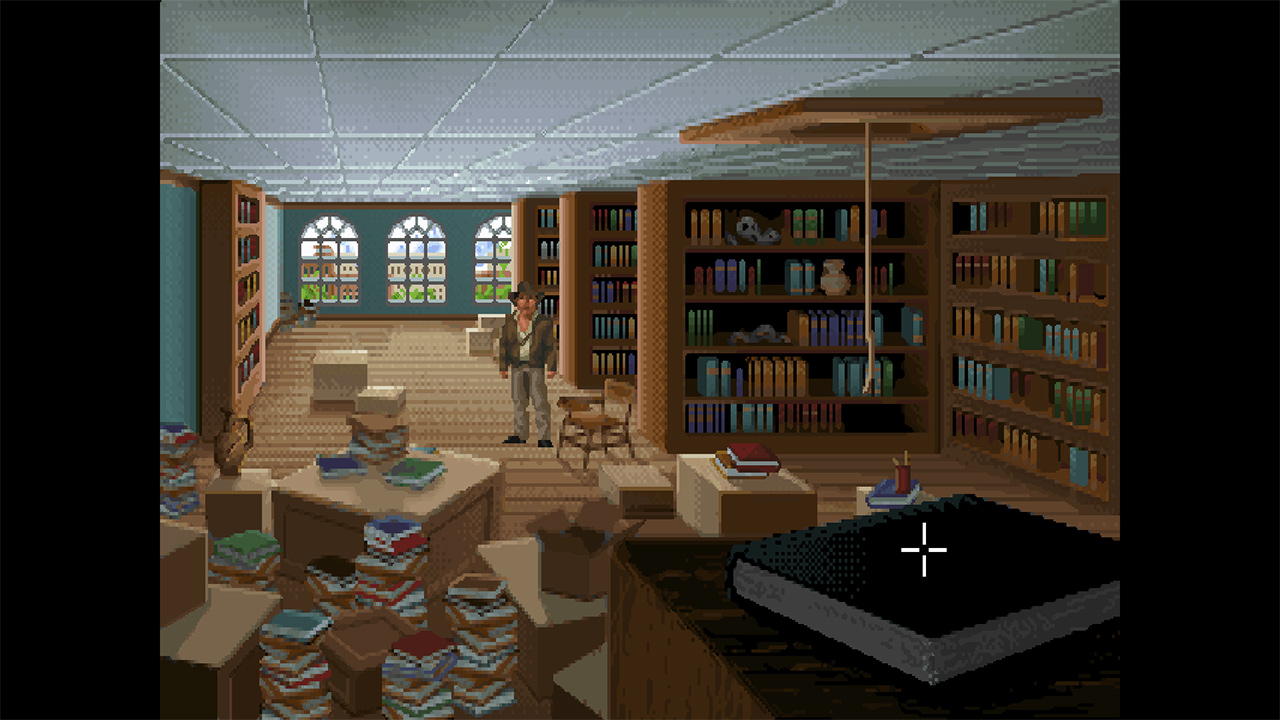
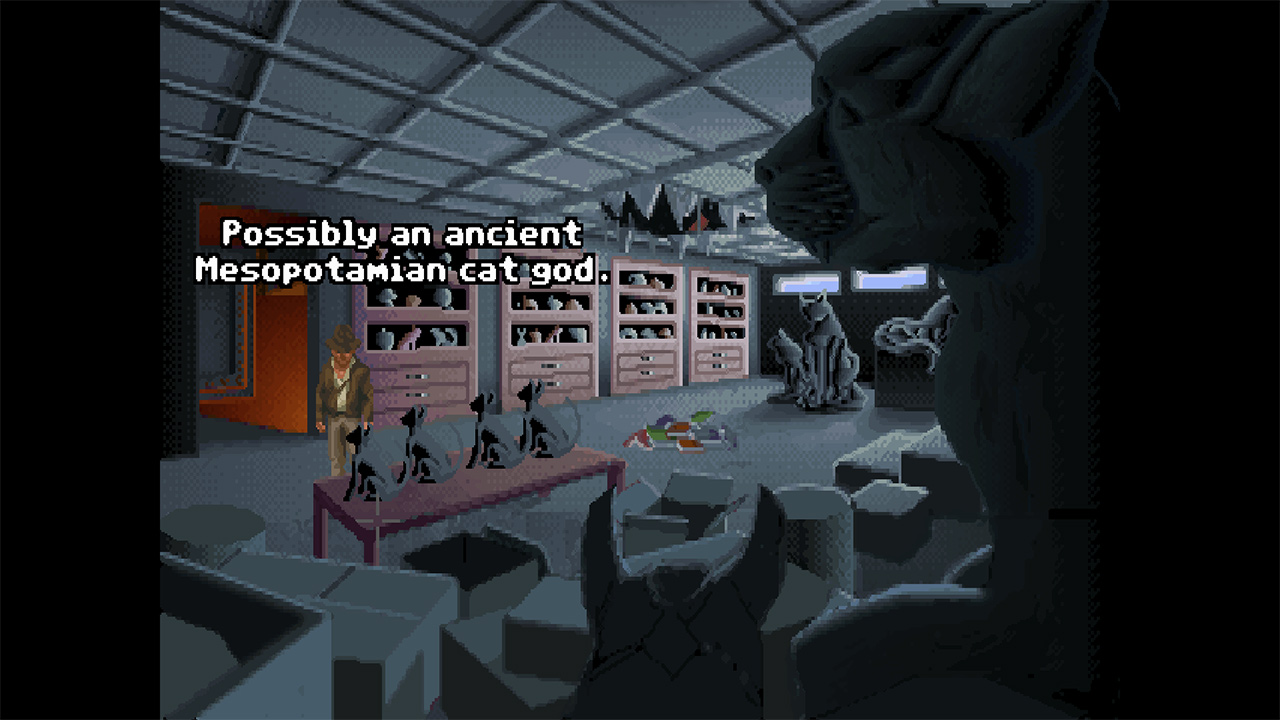
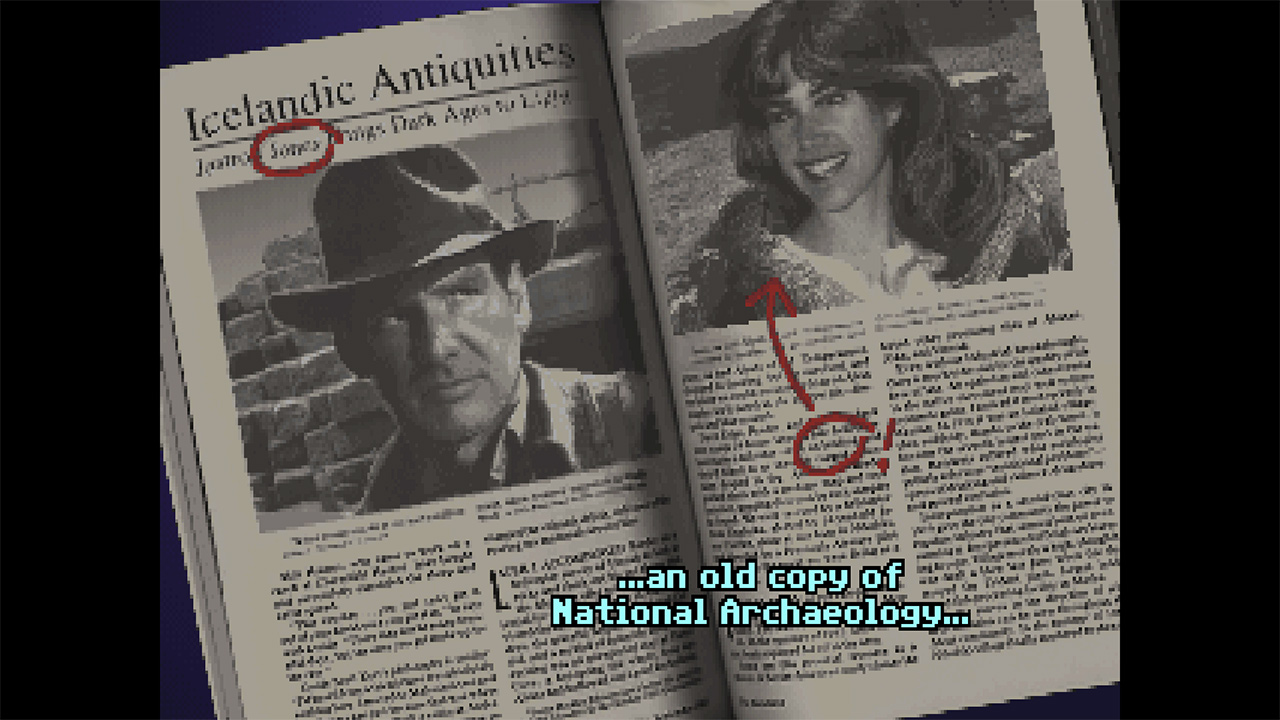
Inside Story
Created by Hal Barwood and Noah Falstein, Fate of Atlantis opens with a sequence so entertaining that it already feels like an Indiana Jones movie by the time the credits stop rolling. It’s the year 1939, and Indy is on the hunt — in the museum archives. A mysterious visitor asks Indy and Marcus Brody to find a horned statue in their collection. Using a key from “Mr. Smith” to unlock the artifact, they find a small metal bead inside, which their guest promptly steals before making a dramatic exit.
Indy discovers that Smith is Nazi agent Klaus Kerner, and that he has his sights set next on his old flame Sophia Hapgood. Indiana, concerned for her safety, finds Sophia and his next big adventure. His journey to uncover the mystery of the statue and the Nazis’ ultimate goal takes him around the globe from New York City to Iceland, Algiers, Monte Carlo, and even to the mythical Atlantis.
The fully-voiced game stars Doug Lee as the leather jacket-clad Indiana Jones and Jane Jacobs as Sophia Hapgood, his sidekick for this story. The moment she declares, “You’ve got some nerve,” Sophia settles easily into Indy’s adventure. She’s a blend of iconic heroines Marion Ravenwood and Willie Scott, with her fierce independence, background in archaeology, plenty of sass, and zero tolerance for Indiana’s quips. She also has fabulous pixel hair. Their interactions are a key ingredient in the mix of plot, dialogue, and characterization that combine to make this compelling game feel quintessentially Indy.
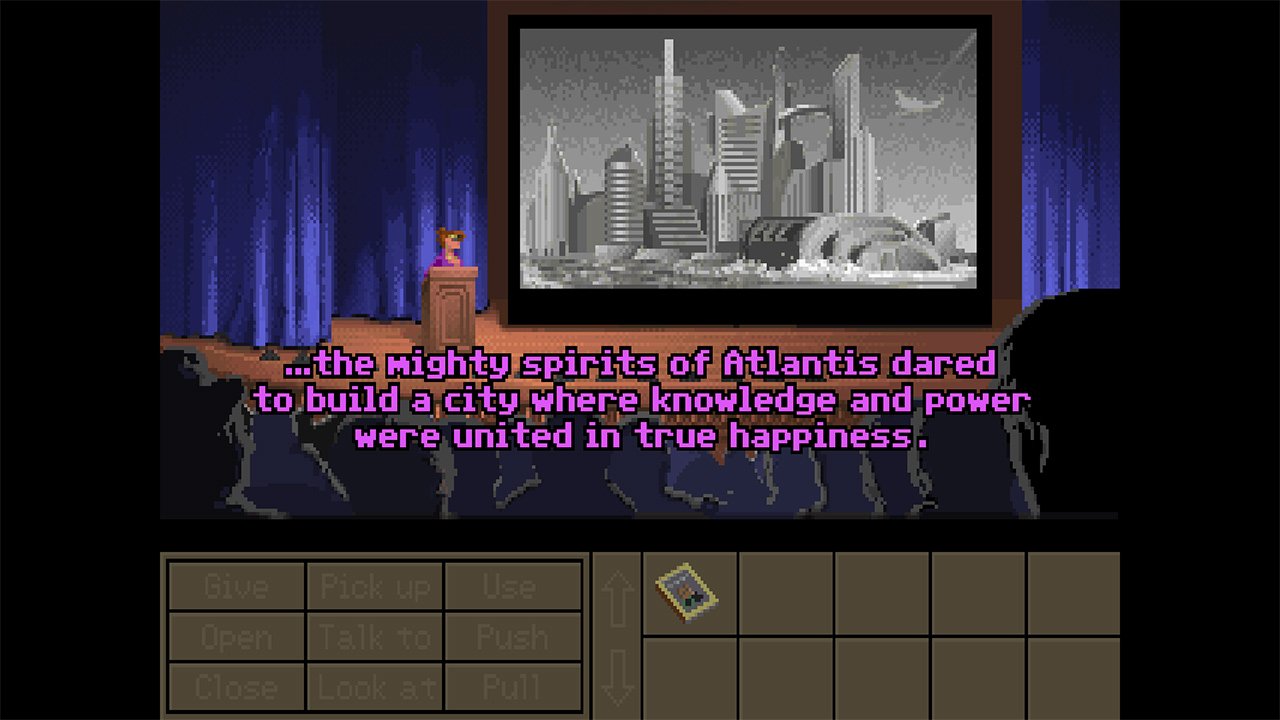
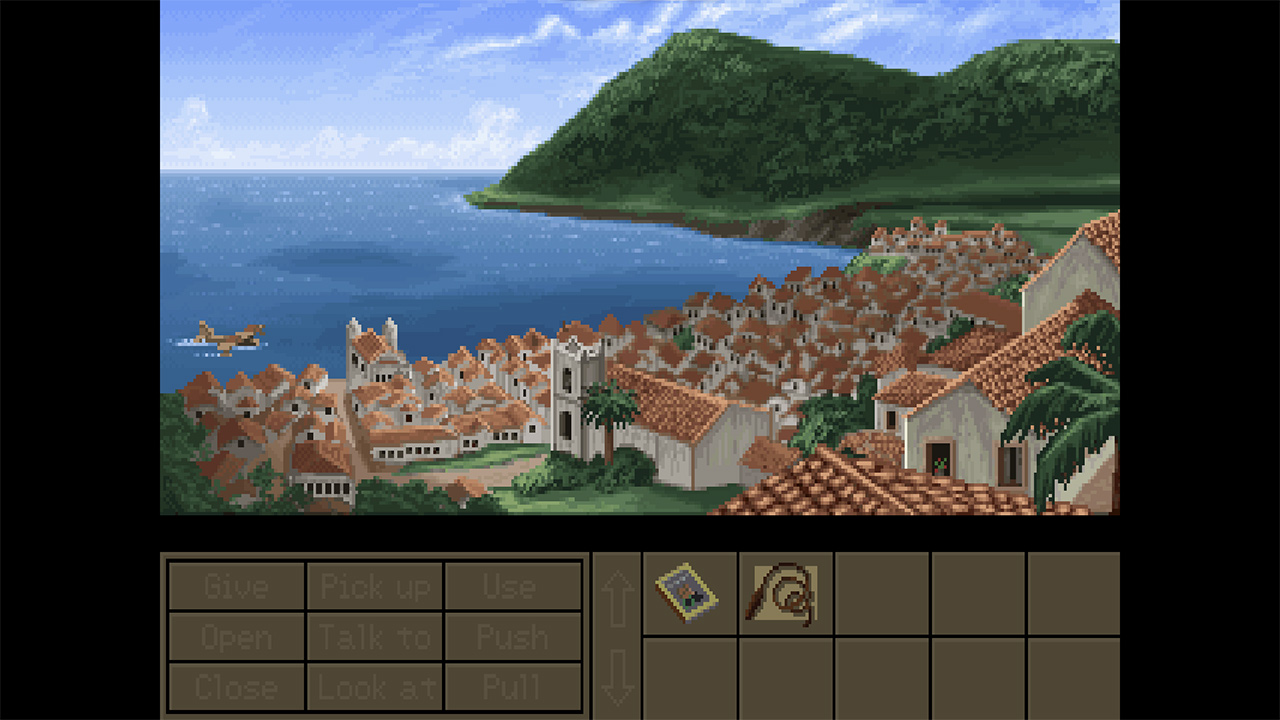
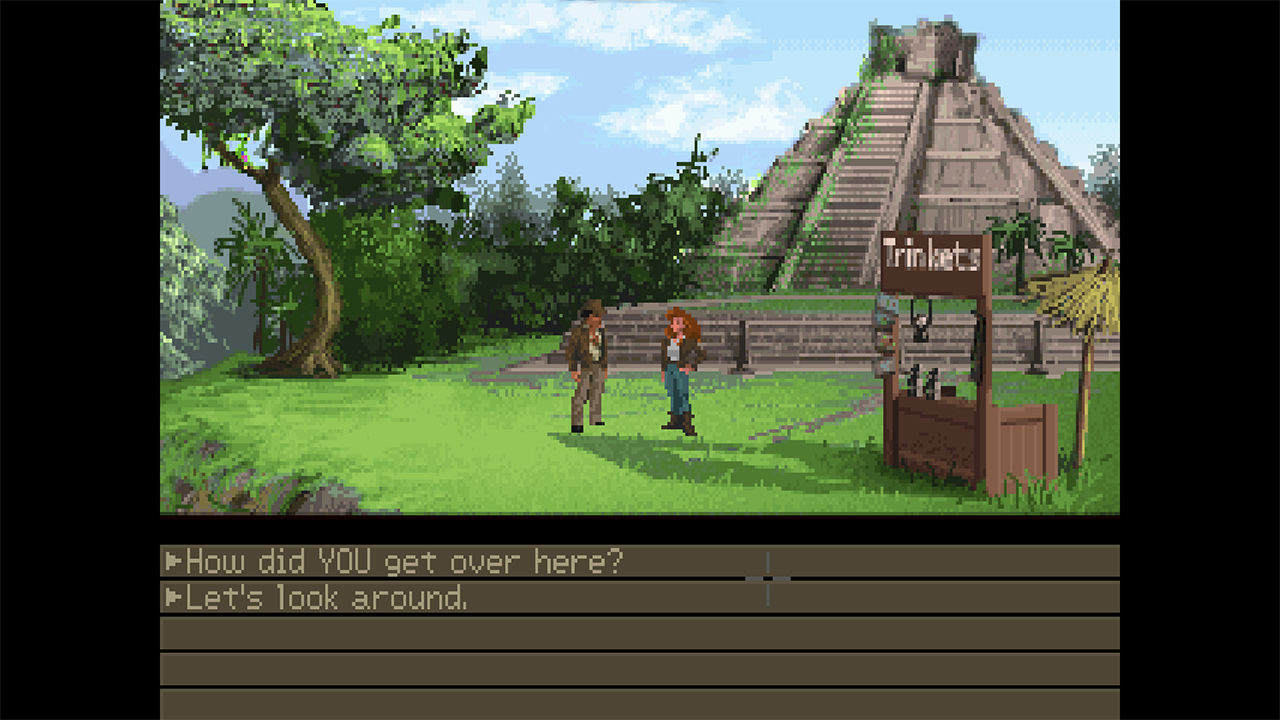
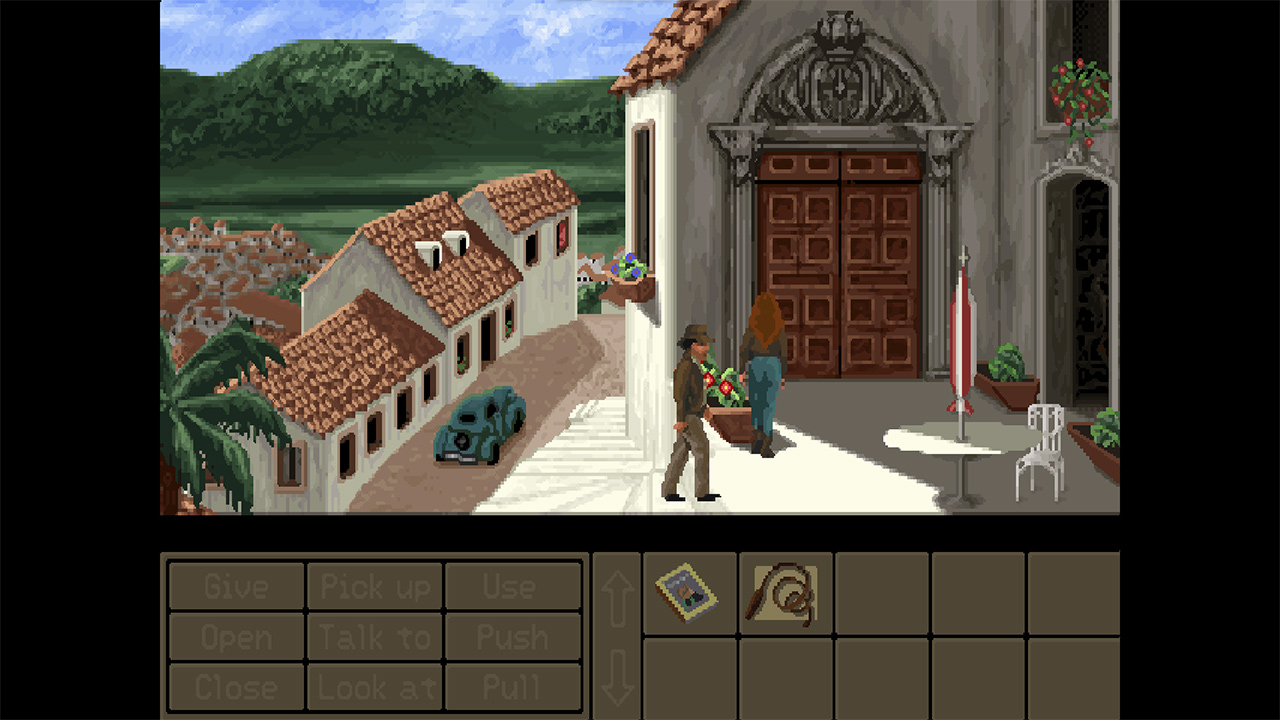
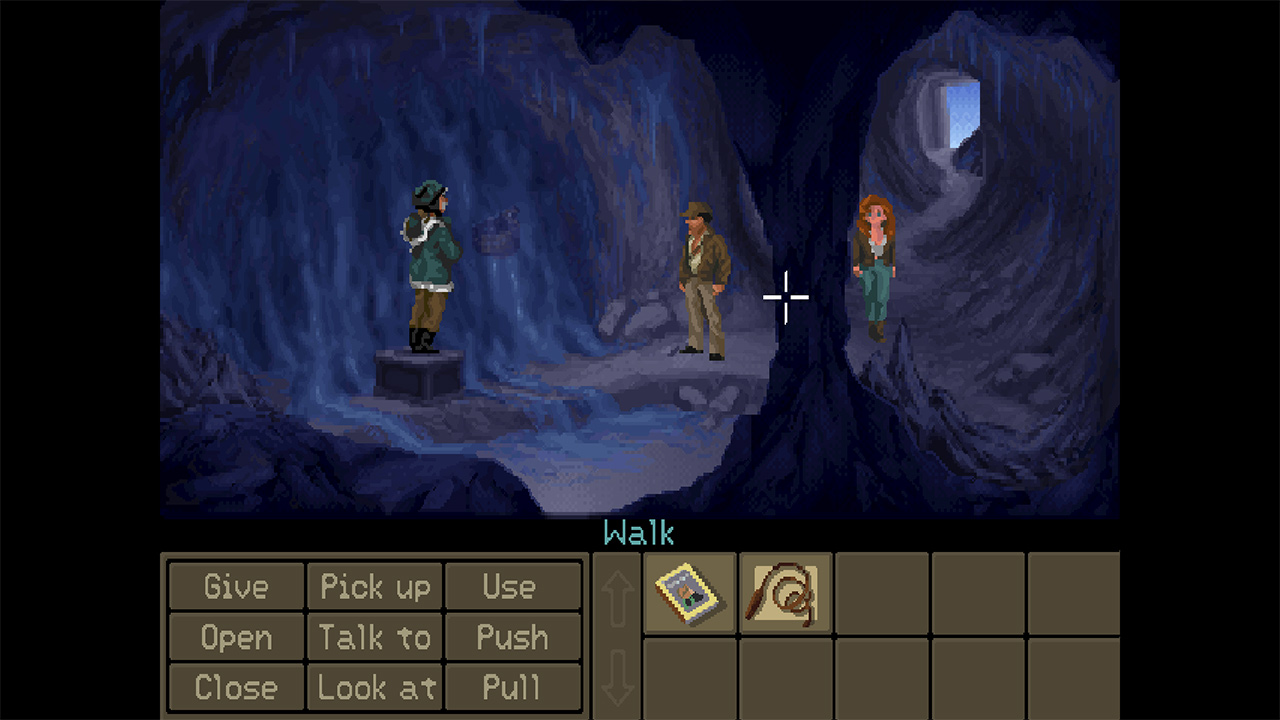
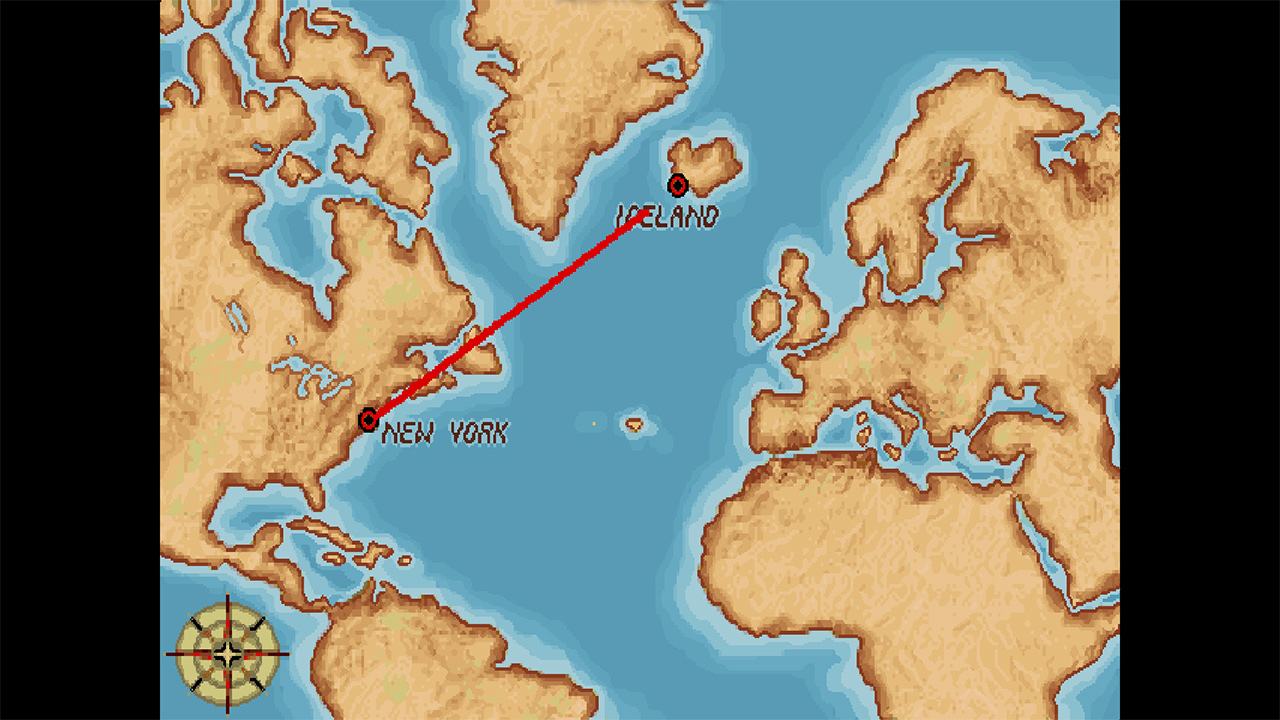
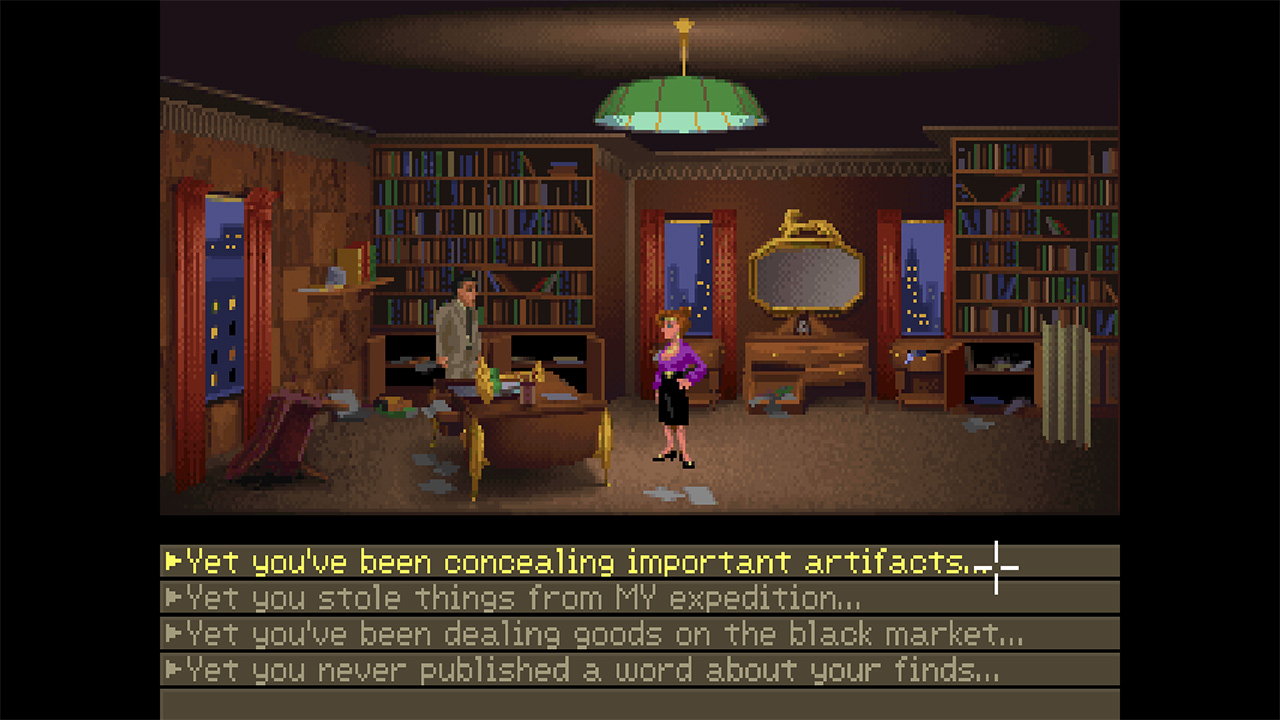
Gameplay
Like many point-and-click adventures in Lucasfilm Games’ early catalog, Fate of Atlantis uses commands selected from the on-screen menu to interact with the elements in the scene and items in the inventory. Indiana can pick things up, use them and give them to another character; he can also push, pull, open, close, and look. “Talk to” is one of Indy’s most-used actions to move the story along. (After playing Fate of Atlantis, don’t be surprised if your brain forever links the word “squab” to Indiana Jones’ voice.)
The intricate puzzles require some pondering and experimenting, and fit right into the classic adventure game genre. The designers also mixed in clever clues into the characters’ dialogue, a welcome hint system for players who prefer to use walkthroughs as a last resort.
Fate of Atlantis adds in some action elements, like driving a submarine, dodging Nazi agents in an extensive maze, and piloting a hot air balloon through an endless desert. Notably, it also offers three separate paths through the story. Choose to work as a team, focus on puzzles, or let Indiana’s fists do the talking. Not only does the choice of mode offer gameplay tailored to the players’ preferences, but the paths are also distinct enough to give the game replayability with something new to discover next time.
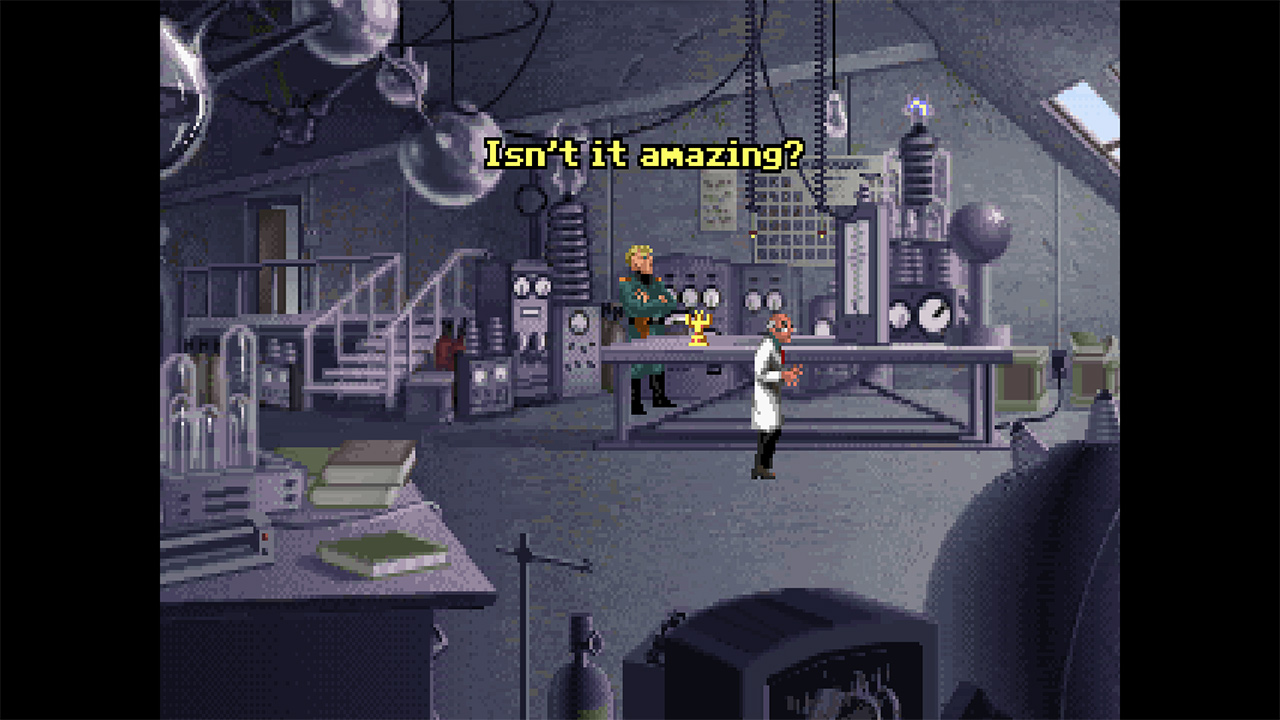
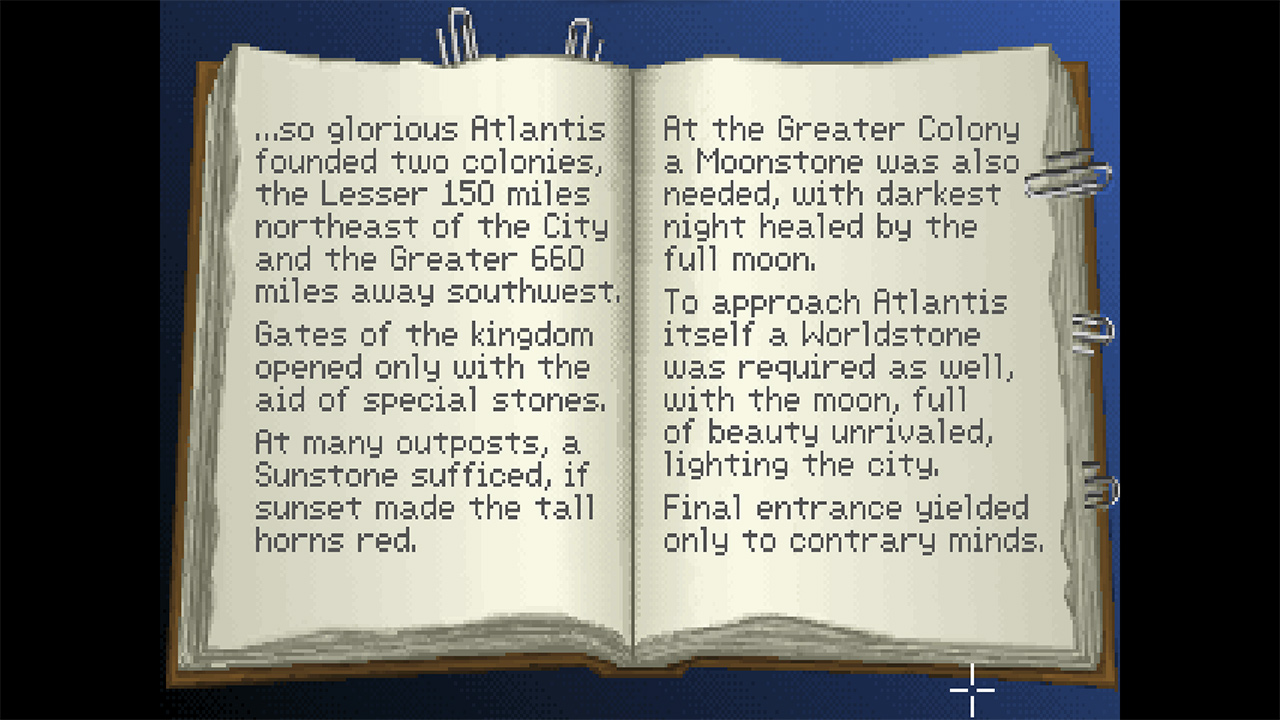
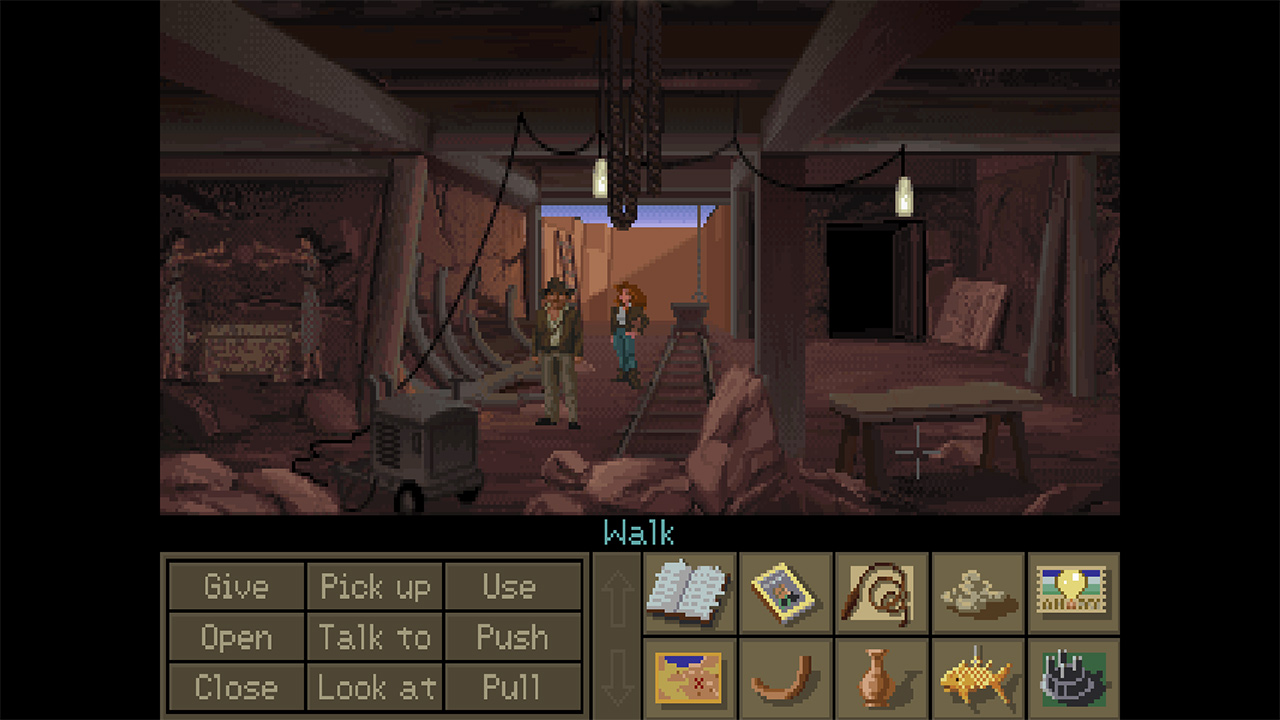
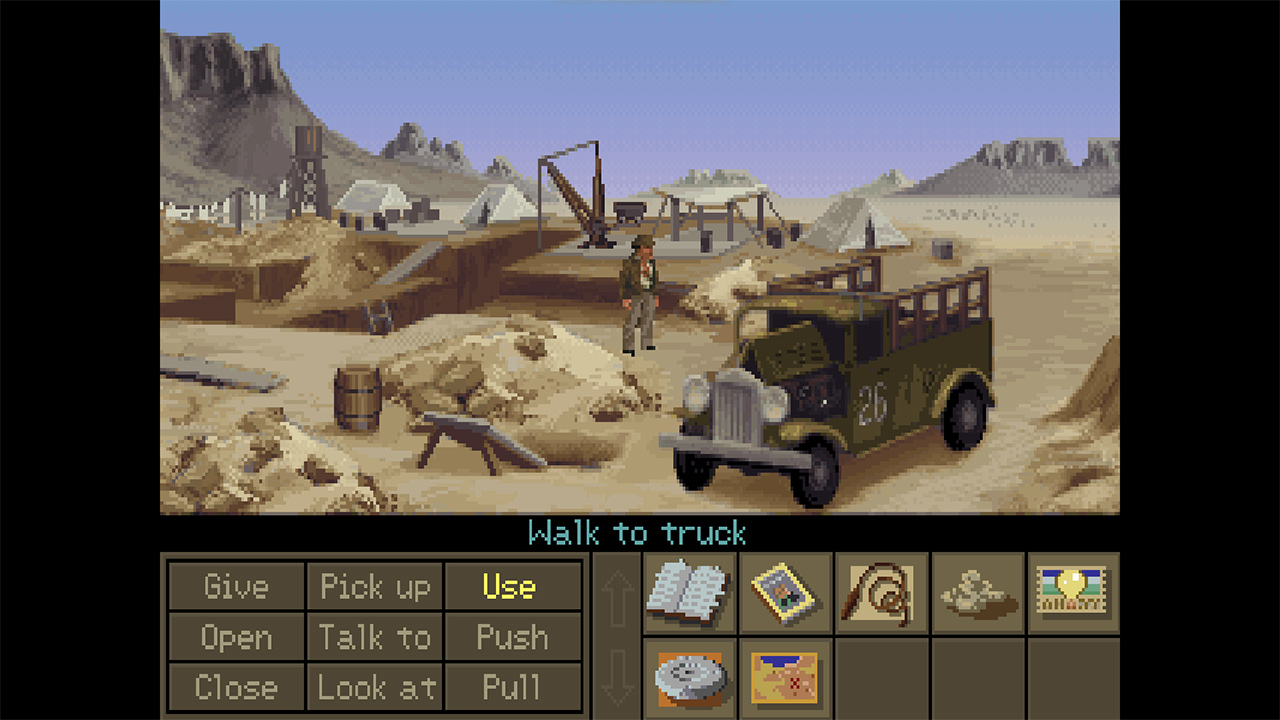
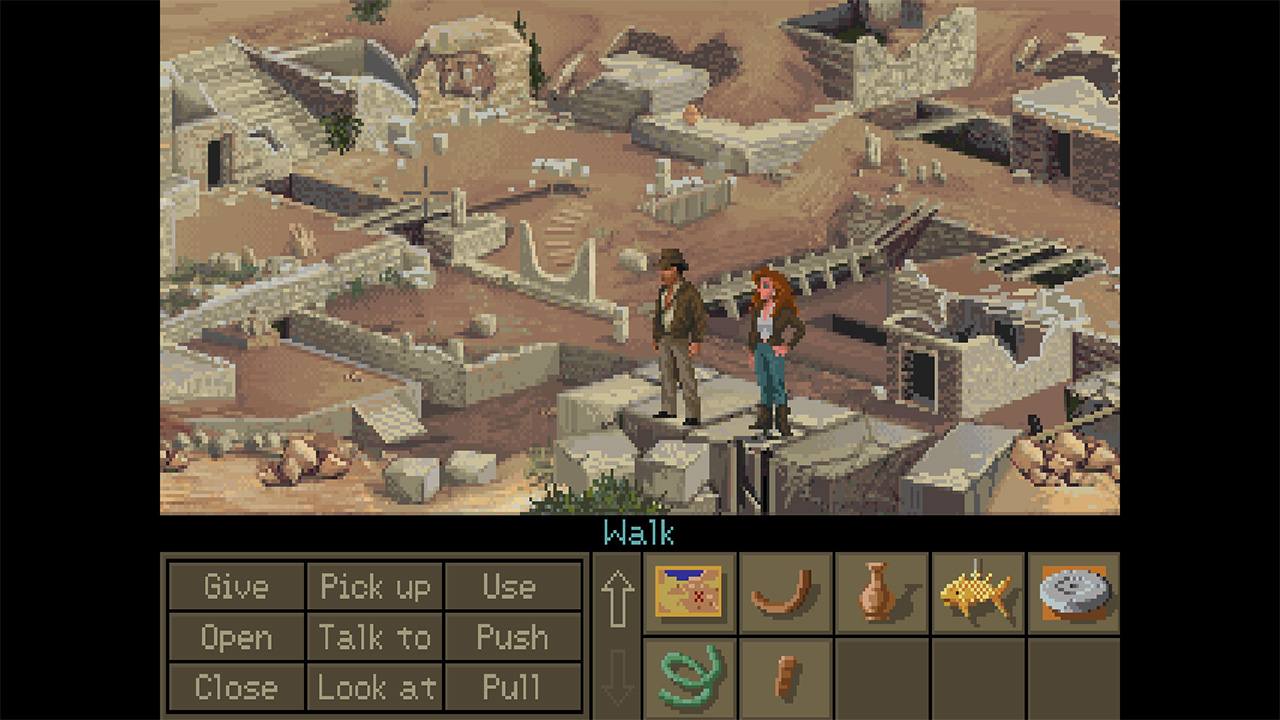
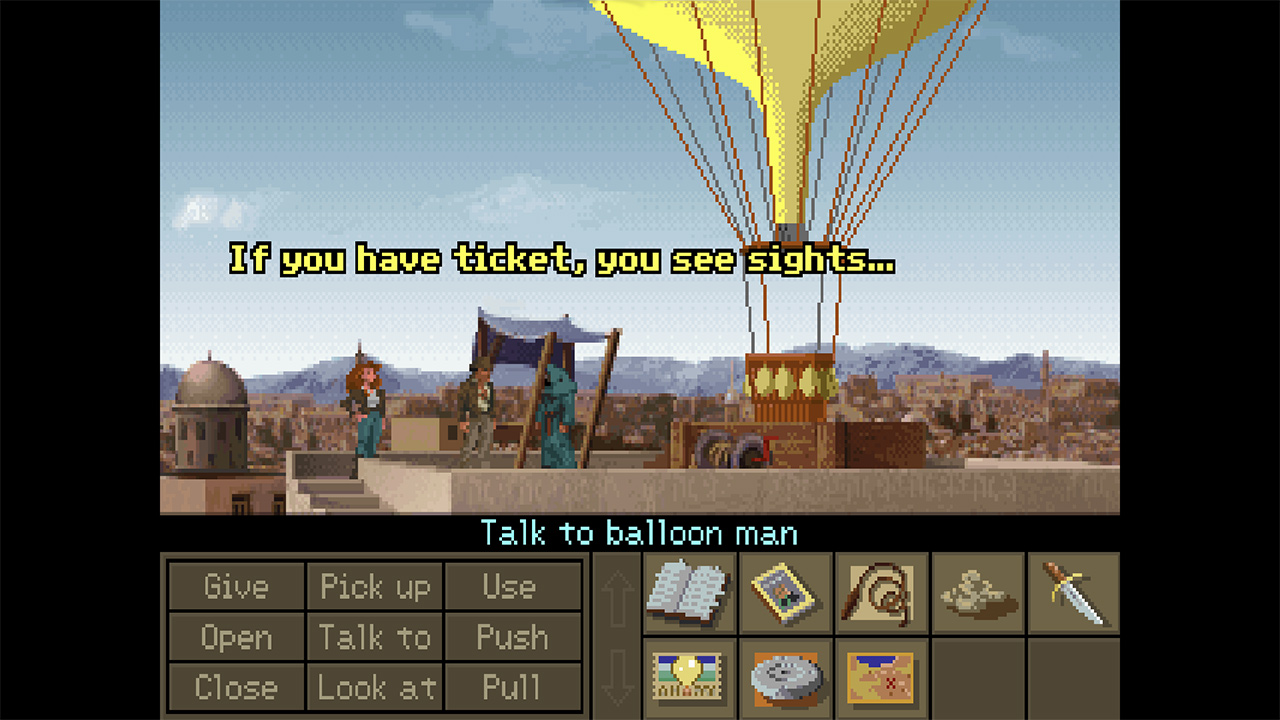
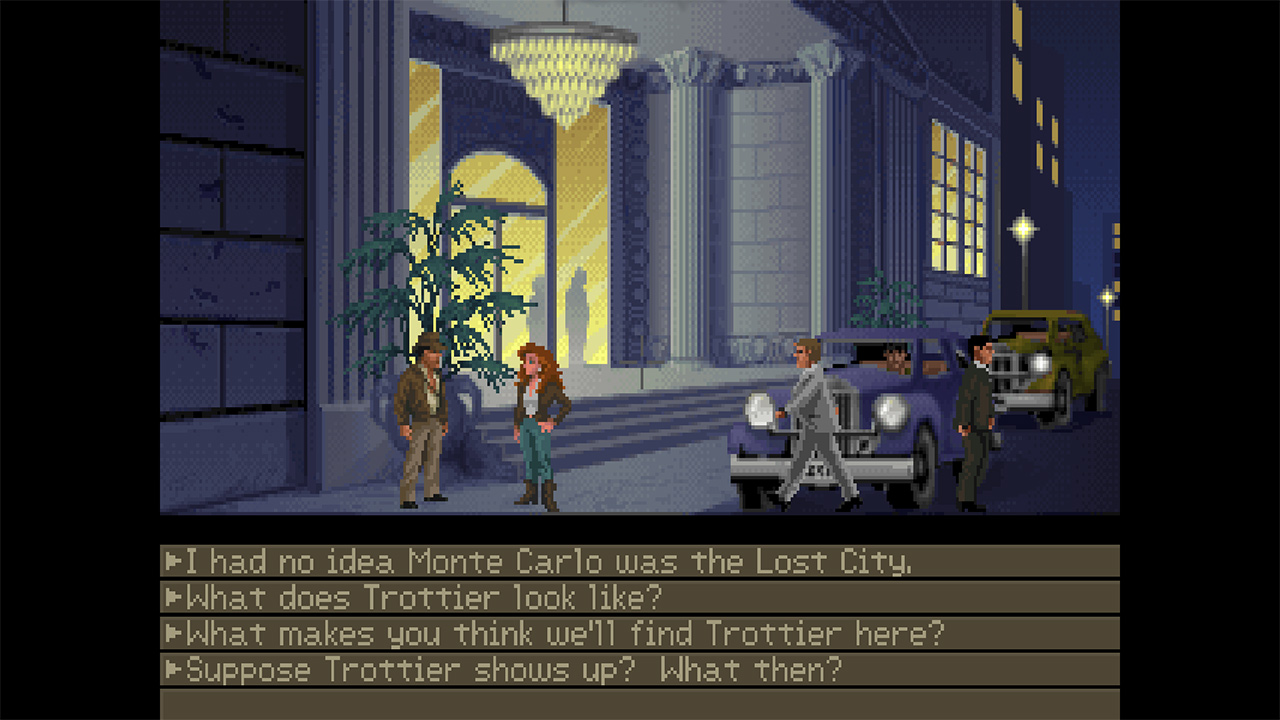
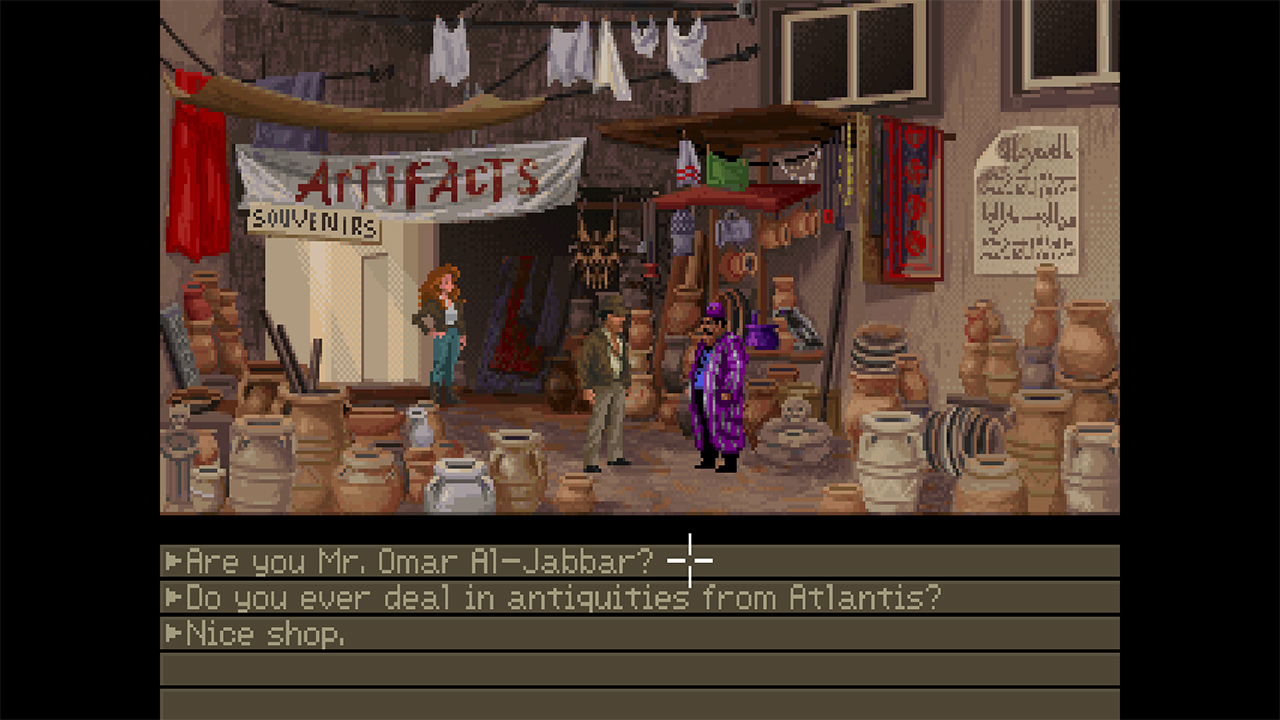
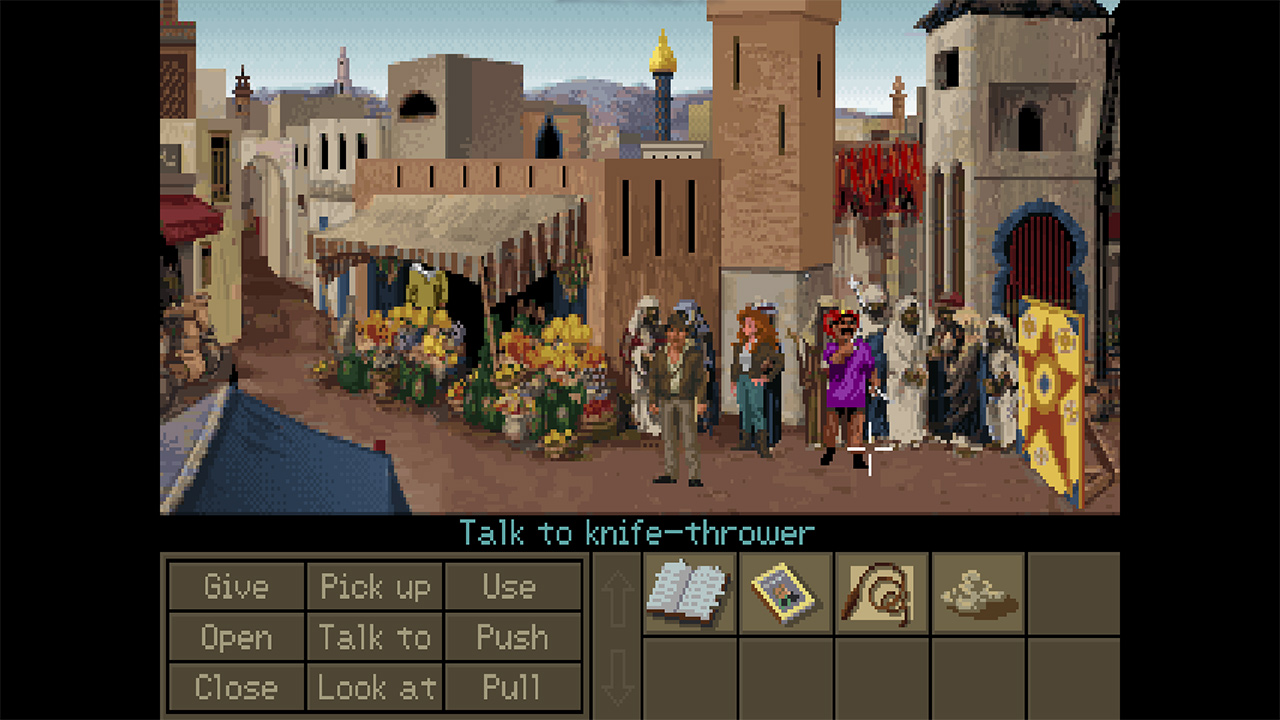
Lasting Legacy
Along with the innovative branching paths, the Fate of Atlantis team also spruced up the visuals for character animation. It’s easy to forget the expressive characters are pixelated; their emotions are plain to see on their tiny faces and in every body movement. Developers captured and traced the movement of real actors with new video rotoscoping technology for the game. As a result, Indiana walks with an easy gait and climbs effortlessly. Even today’s gamers can’t help but be impressed at how good the pixel animation still looks.
The game became a commercial and critical hit after it was released in 1992; IGN.com ranked it #1 in a 2012 countdown of Top 10 Indiana Jones Games. Fate of Atlantis is a test of wits worthy of the world’s most famous archaeologist and modern adventure game players, whether you’re picking the right dialogue choice to tease Sophia or looking for the missing piece of an ancient Atlantean machine.
And, best of all, you don’t even need a Dial of Destiny to turn back time and play it! Indiana Jones and the Fate of Atlantis is currently available on Steam and GOG.com.
Kelly Knox is the author of Star Wars Conversation Cards, Be More Obi-Wan, and a co-author of Star Wars Everyday. Her next books, Star Wars: Dad Jokes and Return of the Jedi: A Visual Archive, are coming in April 2024. You can find her on Twitter at @kelly_knox.

